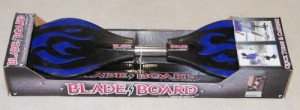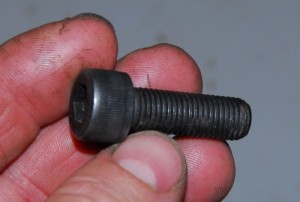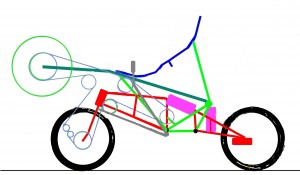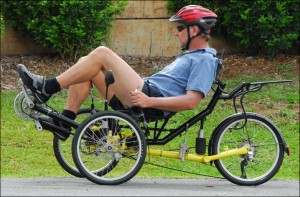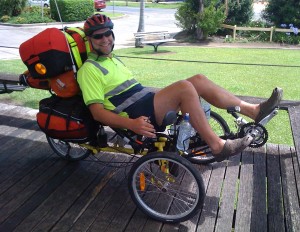I think it was after I crashed for the third time that I started losing confidence in my new machine.
All were low-speed crashes, but still, they were hitting-the-ground crashes. Just as well they were from a pedal bike.

After the saga of the pictured first Chalky (front-wheel drive, delta, leaning, recumbent, suspension design) that reached the stage of being about two-thirds finished before I decided that the build was not going the in the direction I had hoped, I was very excited about the second Chalky.
This one was much more conventional – in terms of weird human-powered machines, anyway.
A long-wheel base, recumbent, rear-wheel drive, suspension bike. I had plans for rider-operated ‘trainer wheels’ to provide low speed stability, but I secretly hope that it would be stable enough to be easily ridden without them.
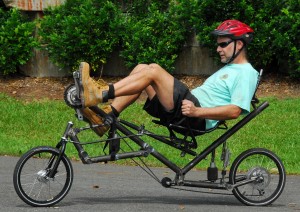
I used the same static front end geometry as the Greenspeed Anura and ran 130mm of suspension travel front and rear, using my favourite Firestone airbags. The rear had a chain path positioned for anti-squat suspension behaviour, and I investigated very thoroughly different types of anti-dive front suspension designs.
And, after many hours of work brazing the (very expensive) chrome moly tubing, I had a machine I could ride.
Ride – and fall off.
I don’t want to over-emphasise the falling off bit, but still, it wasn’t good.
Because a recumbent like this has more weight on the back than the front, and because it is steering of the front wheel that provides the balance (ie puts the centre of gravity over the line joining the front and rear tyre contact patches), on this sort of bike a fair bit of steering is needed to stay upright. I experimented with different steering ratios until I had quick – but not nervous – steering. I also dialed-out all bump-steer.
I experimented with different positions of the front suspension’s upper leading link, and while I could reduce brake dive, it also increased (to an unacceptable level) suspension harshness.
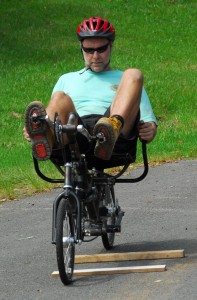
Talking about the suspension, I also think the spring motion ratios were not right: the machine bottomed-out excessively. To prevent simultaneous nose-dive and bumps bottoming the front end, I added a long bump rubber – but the main spring rate was clearly still too low.
The high centre of gravity and soft front spring rate meant that, with vigorous pedalling, full front extension occurred – the rear anti-squat worked fine but the front suspension extended each time.
In short, it was simply nowhere near as good as my existing recumbent trike – nowhere near as good.
Yes, the design of Chalky #2 potentially allows for folding into a small package, but if the stability, ride, and pedalling suspension behaviour are way inferior, it’s hard to justify this approach as the way to go….
In short, I think it’s another failure.
So I’ve started designing Chalky #3…

 Julian Edgar, 50, has been writing about car modification and automotive technology for nearly 25 years. He has owned cars with two, three, four, five, six and eight cylinders; single turbo, twin turbo, supercharged, diesel and hybrid electric drivelines. He lists his transport interests as turbocharging, aerodynamics, suspension design and human-powered vehicles.
Julian Edgar, 50, has been writing about car modification and automotive technology for nearly 25 years. He has owned cars with two, three, four, five, six and eight cylinders; single turbo, twin turbo, supercharged, diesel and hybrid electric drivelines. He lists his transport interests as turbocharging, aerodynamics, suspension design and human-powered vehicles.




